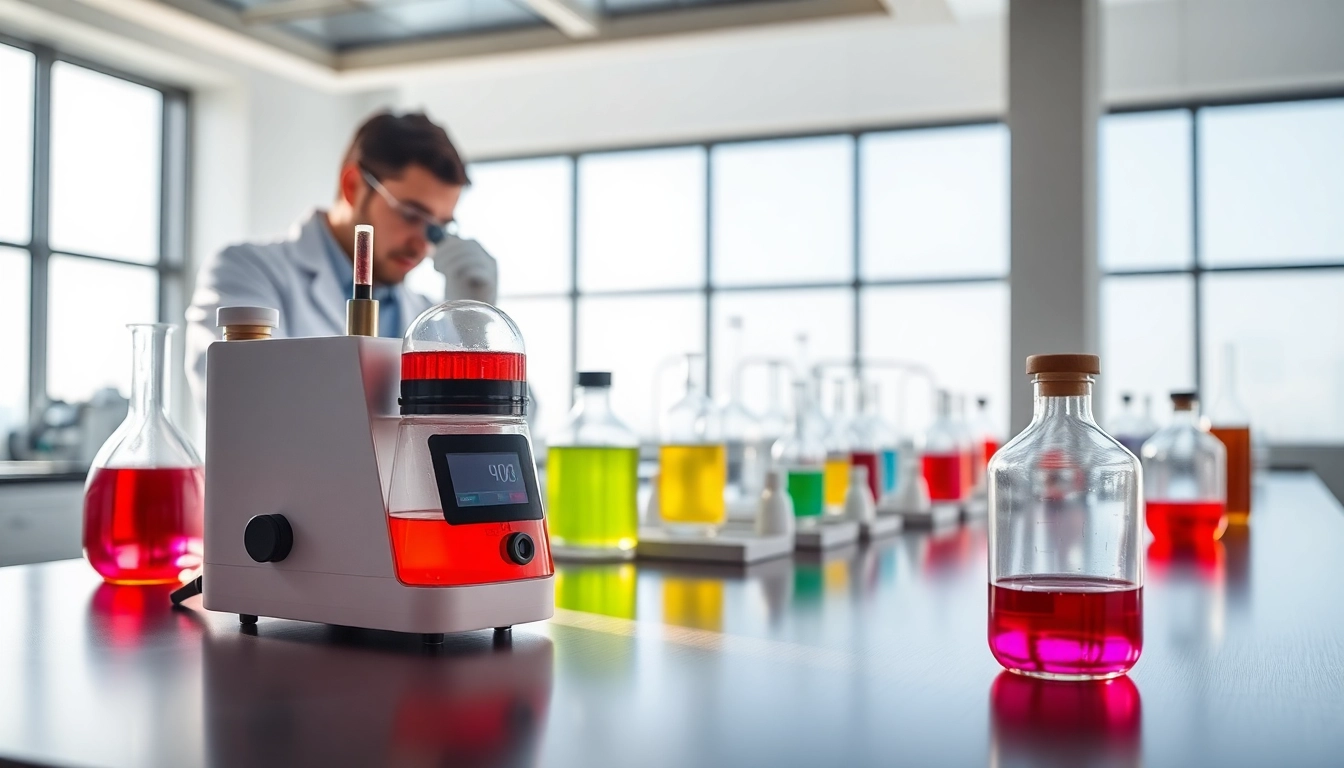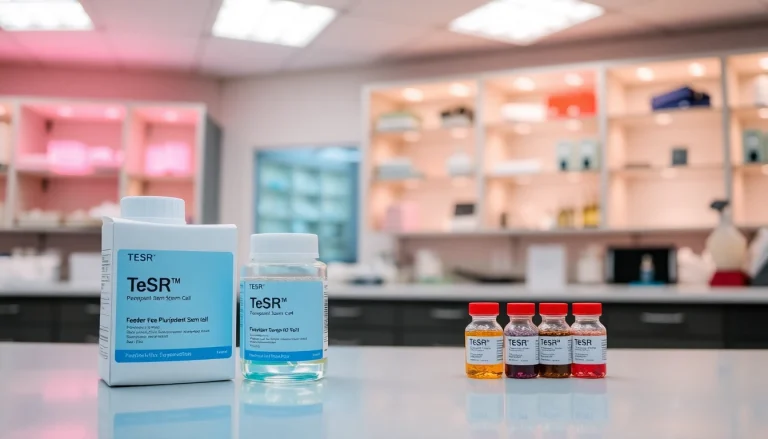Understanding Hydrogen Peroxide Detection
What is Hydrogen Peroxide and Why Detect It?
Hydrogen peroxide (H2O2) is a colorless liquid that serves various purposes, ranging from a simple antiseptic to a potent oxidizing agent in chemical processes. Its powerful oxidizing properties make it invaluable in laboratories, hospitals, and various manufacturing sectors. However, these same properties can also pose significant risks if not managed appropriately. Detecting hydrogen peroxide is crucial for ensuring safety in environments where it is used, stored, or handled.
The need for effective Hydrogen Peroxide detection arises from its potential hazards. In its concentrated form, hydrogen peroxide can cause severe burns upon contact with skin and can be harmful if inhaled. Therefore, timely and accurate detection is vital not only for compliance with safety standards but also for safeguarding individuals and property.
The Importance of Hydrogen Peroxide Detection in Safety
Workplaces that involve the use of hydrogen peroxide must prioritize detection systems to protect employees from accidents and exposure. The Occupational Safety and Health Administration (OSHA) has established guidelines that stipulate permissible exposure limits. Regular monitoring ensures compliance and mitigates the risk of exposure and its potentially harmful effects.
In addition, detecting hydrogen peroxide can prevent dangerous chemical reactions. Hydrogen peroxide can decompose under certain conditions, producing heat and gas, which can lead to explosive situations. Implementing proper detection systems is crucial in laboratories and industrial settings to maintain a safe working environment.
Common Methods for Hydrogen Peroxide Detection
Various detection methods are employed to monitor hydrogen peroxide concentrations in the air or solution. These techniques range from simple qualitative tests to sophisticated quantitative devices:
- Colorimetric Methods: Involve chemical reactions that produce a color change proportional to the concentration of hydrogen peroxide.
- Electrochemical Sensors: Utilize changes in electric current in response to hydrogen peroxide to determine its concentration.
- Optical Methods: Employ light scattering or absorption techniques to analyze hydrogen peroxide concentrations in diverse media.
Each method has its advantages and limitations based on factors such as sensitivity, selectivity, and response time.
Key Technologies in Hydrogen Peroxide Detection
Electrochemical Sensors and Their Benefits
Electrochemical sensors are widely used for hydrogen peroxide detection due to their sensitivity, quick response times, and ease of integration into various systems. These sensors operate by detecting the electric current that results from the oxidation of hydrogen peroxide on an electrode surface. They offer specific advantages, such as:
- Real-time Monitoring: Capable of providing continuous data on hydrogen peroxide levels.
- Low Detection Limits: Effective in detecting trace amounts of hydrogen peroxide, making them suitable for many applications.
- Portability: Often designed to be compact and lightweight, allowing for easy field use.
Despite these advantages, it’s essential to regularly calibrate and maintain these sensors to ensure accurate readings.
Colorimetric Detection Techniques
Colorimetric detection methods rely on the ability of hydrogen peroxide to react with specific reagents, leading to a color change that can be quantified. These methods are often favored for their simple operation and cost-effectiveness. Some notable points include:
- Simplicity: Minimal equipment is required, making it accessible for many laboratories.
- Visual Confirmation: Changes in color provide a direct visual indication of hydrogen peroxide presence.
However, they may lack the precision and sensitivity of other methods, making them more suitable for preliminary testing or educational use.
Advancements in Optical Detection Methods
Recently, advancements in optical detection technologies have led to more innovative methods for detecting hydrogen peroxide. Techniques such as photoluminescence and surface-enhanced Raman scattering are becoming increasingly popular. These methods offer several benefits, including:
- High Sensitivity: Capable of detecting very low concentrations of hydrogen peroxide.
- Non-Destructive Testing: Optical methods often allow for measurements without altering the sample.
These technologies continue to evolve, offering significant promise in enhancing the safety and efficiency of hydrogen peroxide detection.
Implementing Hydrogen Peroxide Detection in the Laboratory
Best Practices for Measurement and Calibration
To ensure accurate hydrogen peroxide detection, implementing best practices for measurement and calibration is crucial. Laboratories should consider the following:
- Regular Calibration: Sensors and detection devices must be calibrated against known hydrogen peroxide standards to maintain accuracy.
- Environmental Controls: Monitoring environmental factors such as temperature and humidity can impact detection results.
- Documentation: Keeping meticulous records of calibration, maintenance, and any findings is essential for compliance and safety audits.
Integrating Detection Equipment into Your Workflow
Incorporating hydrogen peroxide detection seamlessly into laboratory processes is essential. Here are steps to ensure effective integration:
- Assess Needs: Identify specific areas within your workflow where hydrogen peroxide detection is critical.
- Training: Provide adequate training for personnel on how to operate detection equipment and interpret results.
- Integrate with Data Management Systems: Ensure that detection readings are logged into laboratory information management systems (LIMS) for tracking and analysis.
The integration of these practices will yield a more efficient and effective laboratory environment.
Safety Protocols for Handling Hydrogen Peroxide
Safety protocols are paramount when working with hydrogen peroxide to minimize risk. Laboratories should implement comprehensive safety measures, including:
- Personal Protective Equipment (PPE): Staff should wear appropriate PPE, including gloves, goggles, and lab coats.
- Proper Ventilation: Ensure that areas where hydrogen peroxide is handled have adequate ventilation to prevent the buildup of vapors.
- Emergency Protocols: Establish clear emergency protocols in case of accidents, including spillages and exposure.
Challenges in Hydrogen Peroxide Detection
Common Issues and Solutions in Measurement
Hydrogen peroxide detection can come with its own sets of challenges. Common issues include:
- Interference from Other Compounds: Other substances can interfere with detection processes. Implementing sample pretreatment steps can help mitigate this.
- Sensor Drift: Over time, sensors may become less sensitive, necessitating frequent calibration to maintain accuracy.
By identifying these challenges early, laboratories can adopt appropriate measures to ensure reliable measurement results.
Environmental Factors Affecting Detection Accuracy
Several environmental factors can impact the accuracy of hydrogen peroxide detection methods. These include:
- Temperature Variations: Extreme temperatures can affect sensor performance and reaction kinetics in chemical detection methods.
- Humidity: High levels of humidity can lead to false readings, especially in electrochemical sensors.
Monitoring and controlling these factors can enhance the reliability of detection outcomes.
Regulatory Compliance and Its Impact
Adherence to regulatory standards is crucial for maintaining safe lab environments. Regulations provided by organizations such as OSHA and the Environmental Protection Agency (EPA) affect how hydrogen peroxide is handled and detected. Key compliance areas include:
- Documentation of Safety Measures: Keeping detailed records ensures compliance during inspections.
- Regular Training: Ongoing training programs should be established to keep staff updated on compliance requirements.
Staying compliant with regulations not only safeguards health and safety but also protects the organization from legal repercussions.
Future Directions in Hydrogen Peroxide Detection Research
Emerging Technologies on the Horizon
The field of hydrogen peroxide detection is continually evolving, with new technologies developing to enhance measurement methods. Researchers are exploring:
- Nanotechnology: The use of nanoparticles in sensors could lead to more sensitive and selective detection methods.
- Biochemical Indicators: Exploiting biological markers to detect hydrogen peroxide in environmental samples is a promising avenue.
These advancements could pave the way for more efficient and accurate detection techniques, further enhancing safety protocols.
The Role of Artificial Intelligence in Detection
Artificial intelligence (AI) is set to revolutionize the field of hydrogen peroxide detection. Integrating AI with detection systems may lead to:
- Predictive Analysis: AI can analyze historical detection data to identify potential risks or problematic trends.
- Automated Calibration: AI-driven systems could streamline the calibration process, leading to greater accuracy and reliability.
The intersection of AI and hydrogen peroxide detection holds great promise for improving safety and operational efficiency.
Collaborative Research Opportunities and Initiatives
To advance hydrogen peroxide detection methods, collaboration among academia, industry, and regulatory agencies is essential. Collaboration can lead to:
- Shared Resources: Pooling resources from different institutions can expedite research and development efforts.
- Cross-Disciplinary Studies: Collaborative studies can drive innovation by combining expertise from various fields.
Such partnerships can significantly accelerate the development of new technologies and safety standards in hydrogen peroxide detection.








